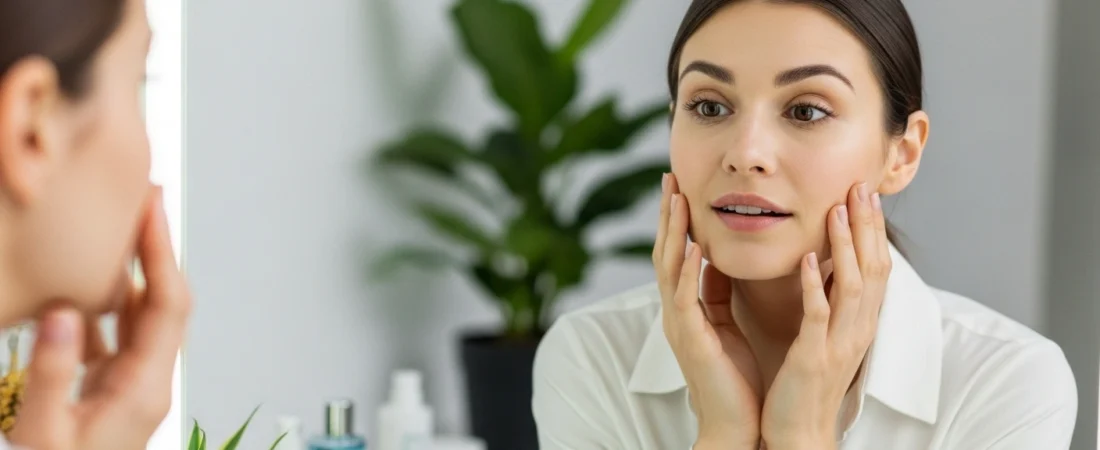For most of the people, the world of skincare can be confusing, since there are full of products promising to solve every issue. Yet, the first and most crucial step in creating an effective routine is understanding your skin type. Without this foundational knowledge, you may find yourself using products that are either ineffective or, worse, detrimental to your skin’s health. While it may seem complicated, identifying your skin type is a straightforward process that anyone can do at home.
The Bare-Face Method: A Simple Test
This simple test, often recommended by dermatologists, helps you observe your skin in its natural state. The process is both easy and revealing.
First, wash your face with a gentle cleanser. Pat it dry with a soft towel and avoid applying any products—no moisturizers, serums, or makeup. After an hour, take a moment to observe your skin’s appearance and feel. This waiting period allows your skin to return to its natural state without interference from products.
Understanding the Major Skin Types
After completing the bare-face test, you can identify which of the following categories your skin falls into.
- Normal Skin
If your skin feels balanced after an hour, you likely have a normal skin type. This type is not too oily, not too dry, and feels comfortable. You won’t notice large pores or a significant shine, and your skin rarely experiences sensitivity. It simply feels healthy and well-balanced. It’s important to note that even normal skin needs consistent care to maintain its healthy state. - Oily Skin
Does your face have a noticeable shine, especially across your forehead, nose, and chin? If your skin feels greasy and looks shiny, you probably have oily skin. You might also notice enlarged pores and be more prone to breakouts. This oiliness is due to the sebaceous glands producing an excess amount of sebum, the skin’s natural oil. - Dry Skin
If your skin feels tight, rough, or flaky, you are likely dealing with dry skin. This can sometimes feel like a thin, tight mask is pulled over your face. You may also notice fine lines and a dull appearance. Unlike oily skin, dry skin produces less sebum, making it more susceptible to dehydration and irritation. A telltale sign of dryness is seeing flaky patches, especially around the cheeks and jawline. - Combination Skin
This is perhaps the most common and often confusing skin type. If you notice a mix of both oily and dry areas, you have combination skin. Typically, the T-zone (forehead, nose, and chin) becomes oily, while the cheeks and other areas remain normal or dry. This is a common experience, like having two different skin types on one face. Your skincare routine will need to address both concerns. - Sensitive Skin
Sensitive skin is more of a condition than a type, as it can occur alongside any of the above. If your skin often reacts to new products with redness, itching, or a burning sensation, you have sensitive skin. It is prone to inflammation and irritation. When trying new products, it is always wise to perform a patch test on a small area of skin first. This can prevent a full-face reaction and help you find products that are gentle and effective.
Why Does This Matter?
Knowing your skin type is not just a label; it is a roadmap for your skincare journey. Using products that do not suit your skin type can disrupt its natural balance, leading to problems. For instance, using harsh, oil-stripping products on dry skin can cause more flakiness and irritation. Conversely, using heavy, creamy moisturizers on oily skin can lead to clogged pores and breakouts.
By taking a few moments to understand your skin, you can select products that truly work for you. This simple act can transform your routine from a series of educated guesses into a deliberate, effective process that leads to healthier, more radiant skin.

